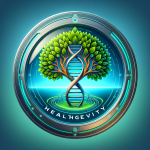-
HealthGevity Admin posted in the group Longevity
Longevity 2023: …to X, Y, Z
Our second look at some of 2023’s longevity news, but this time from the other end of the alphabet, including XPRIZE, young blood and Zero.
Earlier in the week, we took a spin through a selection of longevity stories that had the letter A in common; as the year draws to a close, it’s time to flip to the other end of the alphabet and check out some of the X, Y and Z stories we published this year.X is for Xenotransplantation
Publishing in Nature, US biotech eGenesis disclosed long-term survival data from a proof-of-concept study, demonstrating the viability of genetically engineered donor kidneys from pigs transplanted into monkeys. The study increased hopes that xenotransplantation – transplanting organs from an animal source into a human recipient – may soon enter human trials and constituted the largest and most comprehensive preclinical dataset published in a domain where recipient survival has typically been limited to weeks or months.“If you look at pig kidney transplants into primates over the past several decades, rarely do you see something break 100 days’ survival,” eGenesis CEO Mike Curtis told Longevity.Technology. “Now we’re talking about a donor that addresses all the challenges of xenotransplantation cross species and produces long term outcomes … We now have seven recipients that have made it out to that 12-month endpoint, which is unique in the field.”
X is for XPRIZE
One of the highlights of the Global Healthspan Summit in Riyadh was the announcement of XPRIZE Healthspan – a whopping $101 million in prize money to a team that successfully develops a therapeutic that restores muscle, cognition and immune function by 20 years in older adults. The winning team must also be able to demonstrate the results in a treatment period of one year or less.“This is key for the longevity field – our framework is about functional improvement,” XPRIZE Healthspan’s executive director Dr Jamie Justice told Longevity.Technology. “We’re focusing on function, because we’re asking teams to show improvement, which is very different than something like the TAME trial, which is looking at prevention. We have a ‘menu’ of possible measures that people can use under the three domains of muscle, cognitive and immune function. We want teams to have a strong signal and show that they’ve made change in a meaningful way across all three domains.”
Y is for Yamanaka Factors
Discovery of the Yamanaka Factors, the product of a group of genes that have a profound effect on cellular aging, won Shinya Yamanaka the Nobel Prize in 2012. The discovery that mature cells can be reprogrammed to become pluripotent has catalyzed cellular reprogramming research, and while there are still safety and delivery hurdles to overcome, this year saw several promising developments.In April, researchers at Life Bio and academic researchers, including Drs Bruce Ksander and David Sinclair, reported that Life Bio’s therapy significantly restored visual function in an non-human primate model of non-arteritic anterior ischemic optic neuropathy (NAION), a disorder similar to a stroke of the eye that is characterized by painless yet sudden loss of vision. LifeBio’s lead platform reprograms the epigenome of older animals to resemble that of younger animals via expression of three Yamanaka factors, Oct4, Sox2, and Klf4, and there was much excitement about the success of the therapy in primates.
Then in July, a new study in Aging undertook to identify molecules that can reverse cellular aging and rejuvenate human cells without altering the genome. The researchers identified six chemical cocktails that could reverse transcriptomic age and rejuvenate cells to the same extent as overexpression of Yamanaka Factors, successfully demonstrating that rejuvenation by age reversal can be achieved, not only by genetic, but also chemical means.
Y is for Young Blood and Yuvan
User Badges
Gamipress User Balance
1440
Points
0
XPs






